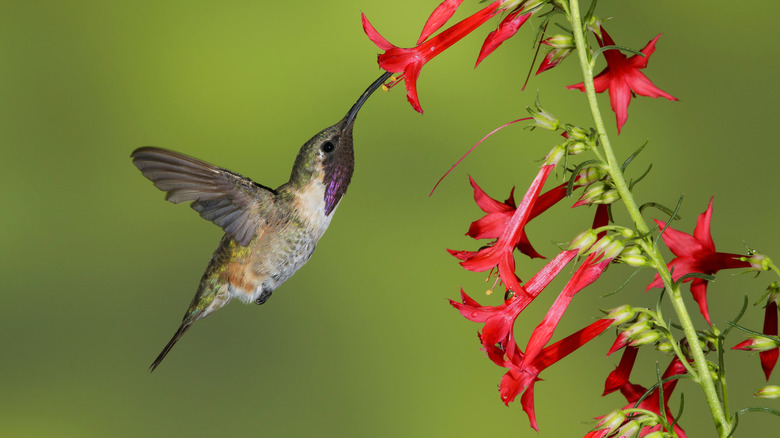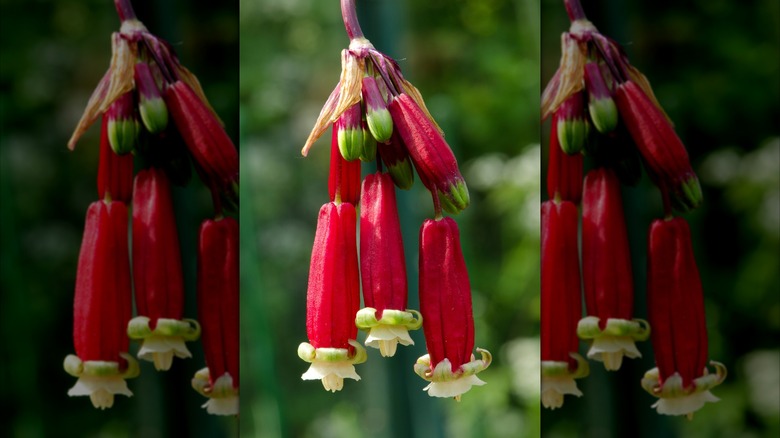The Fiery Red Wildflower That Will Make Your Landscape Pop And Bring Hummingbirds To Your Yard
Perennials with red flowers make a statement in your yard year after year. This statement speaks to hummingbirds, which are drawn to a range of reddish hues. Flowers of this color stand out in their field of vision and tend to have an ample nectar supply. California firecracker (Dichelostemma ida-maia), a wildflower native to California and Oregon, can enliven your landscape with the sizzling red of its petals, the intriguing shapes of its blossoms, and the graceful curves of its stalks. In the process, it's likely to attract hummingbirds, bees, and butterflies, boosting your neighborhood's biodiversity.
Sometimes called the firecracker flower, California firecracker performs best in USDA hardiness zones 5 through 8. Its blossoms resemble miniature tubes, and they're just the right shape for hummingbird beaks to explore with ease. The showy flowers bloom in late spring and early summer, dangling from the plant's stalks like little bells. When grown in a garden or border planting, this plant may reach a width of 4 feet and a height of 3 feet. You can also plant it in deep containers that give its roots plenty of space to spread out. Bringing the containers inside for the winter makes it possible to grow California firecracker in colder climates.
Helping your California firecracker thrive and attract hummingbirds
California firecracker is a low-maintenance flower that even beginners can grow from seed or corms. It's forgiving, too, tolerating water shortages and a range of sunlight situations. Generally speaking, California firecracker adores full sun but accepts partial shade. As a species that's accustomed to woodlands, it's also happy in the dappled sunlight found beneath tree canopies. Since birds pollinate California firecracker's flowers, the plant needs hummingbirds just as much as they need it. Give it as much sun as you can to encourage growth and flowering, which will also encourage hummingbird visits.
If your yard's soil has some flaws, California firecracker probably won't complain. This cheery plant welcomes clay-laden soil and sandy ground as long as the drainage is sufficient. If water is pooling in your soil, address the issue by integrating an organic material such as compost. When watering California firecracker, remember that it prefers dry soil to soggy ground. A growing site that's too wet promotes root rot, a problem you must deal with quickly so it doesn't kill your plant. Though California firecracker isn't prone to pests, overwatering can also set the stage for fungus gnat infestations. It's crucial to keep the soil dry in late summer and fall, when the plant goes dormant.

